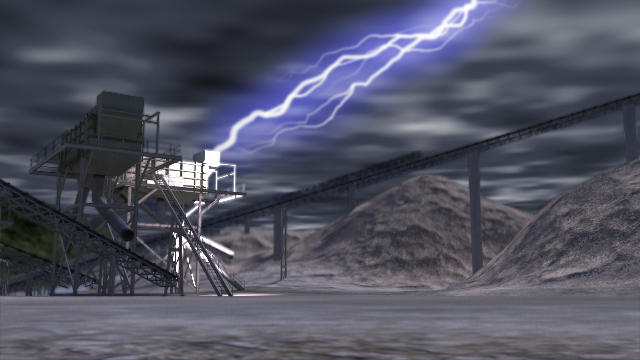




Environmental Hazards at a Mine
Since miners and equipment at surface mining operations are exposed to the elements, it is important to work cautiously and recognize the hazardous conditions that weather can create. This course discusses several different weather conditions that can affect the mine site including high winds, ice, excessive rain, lighting, and fog. This course also discusses airborne hazards as well as unstable ground conditions and water hazards. Based on MSHA’s 30 CFR Part 46.5.b.2.
Request a demoCourse Details
Learning Objectives
• Identify hazardous weather conditions • List best practices to avoid harm from hazardous weather conditions • Identify airborne, ground conditions, and water hazards • List best practices to avoid harm from airborne hazards, ground condition hazards, and water hazards
Specs
| Course Level | Intermediate |
| Languages | English |
| Compatibility | Audio, Video |
| Based on: | 30 CFR Part 46.5.b.2 |
Key Questions
What kind of hazards can high winds create at a mine site?
High winds can cause power lines and tall equipment to fall. Powerful gusts can also carry dust, coarse particles, and even large objects, such as signs and building materials over distances at high speeds.
What kind of hazards can high icy conditions create at a mine site?
Freezing rain, snow, and extreme cold can cause ice to build up on roads, walkways, equipment, and power lines. Icy conditions can also create slip and fall hazards for miners as well as traction control hazards for equipment and vehicles.
What kind of hazards can excessive rain create at a mine site?
Excessive rain can produce unsafe conditions, such as reduced traction, limited visibility, flooding, landslides, and electrocution.
What should I do if I cannot find shelter during a lighting storm?
If you cannot find shelter during a lighting storm, crouch down with both feet together and stay at least 15 feet from other people if possible. Avoid water, high ground, open spaces, solitary trees, and metal objects.
What is the best way for mine operators to avoid exposing miners to airborne hazards at a mine site?
The best way for a mine operator to avoid exposing miners and others to airborne hazards is to have the mine tested by an environmental engineering service.
Sample Video Transcript
High winds can cause power lines and tall equipment to fall. Powerful gusts can also carry dust, course particles and even large objects such as signs and building materials over distances at high speeds. During high wind conditions, miners and others on site should do the following: stand clear of tall equipment. Lower, anchor and secure the equipment when possible. Avoid crane operations. Use fall protection and extra-caution at elevated or exposed locations, or avoid walking at heights if possible. Avoid areas where power lines could fall creating an elecrocution hazard. Watch for falling or airborne objects and use eye-protection from airborne particles.
Additional Resources
- National Institute for Occupational Safety and Health (NIOSH) – www.cdc.gov/niosh/
- NIOSH Selected Health Issues in Mining – http://www.cdc.gov/niosh/mining/userfiles/works/pdfs/shiim.pdf
- Mine Safety and Health Administration (MSHA) – www.msha.gov
- MSHA Safety and Health Info – http://arlweb.msha.gov/S&HINFO/blacklung/DUST99.PDF
- MSHA Resource Page – http://arlweb.msha.gov/SiteIndex/MNMSiteIndex.asp
Course Applies To
Demos + Pricing
Learn more about our courses, get pricing, and see our platform.











